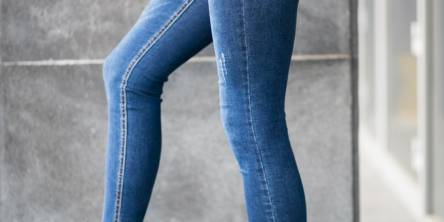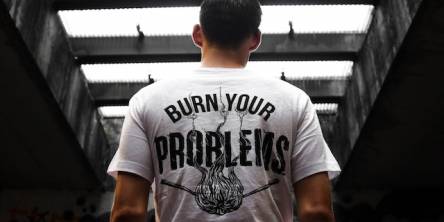Understanding Fabric Composition: Why It Matters and How to Check It

That is why in the choice of a specific material for clothing, homewares, or any textile-related project, the composition of the fabric matters.
Regarding the fabric composition, both the aesthetic presentation and the wear resistance, proper care, as well as the admissibility of specific applications, are impacted.
This article looks at why it matters, how to examine it, and what to look out for when in the process of determining what fabric to buy for your next project.
Why Fabric Composition Matters
1. Durability and Longevity
● Natural vs. Synthetic Fibers: Organic materials including cotton, wool, and silk are soft, gentle to the skin and allow passage of air unlike synthetic fabrics like polyester and nylon though they may not last long.
Knowledge of the composition assists one be able to deciding on which fabrics are suitable for use in certain applications and are likely to have a longer life span.
● Blends: Some materials are produced out of mixed natural and artificial fibers which possess the favorable characteristics of the two.
For instance, a fabric that is a blend of cotton and polyester will afford the softness and airiness of cotton and the ruggedness and increased quality of polyester.
2. Comfort and Wearability
● Breathability: Thus, natural fabrics such as cotton or linen tissue are distinguished by their ability to cool the skin and thus are appropriate for wear in hot climates.
Synthetic fibers, on the other hand, are capable of trapping heat and moisture within the mattress for this reason that synthetic fibers should be avoided.
● Stretch and Recovery: Clothes containing spandex or elastane are more effective when it comes to stretch and rebound hence suitable for use in activewear and form-fitting apparel.
3. Care and Maintenance
● Washing and Drying: Those fabrics that need extra attention, including dry cleaning, hand washing, and other special treatments are categorized differently from fabrics that can easily be washed in a washing machine.
Understanding its composition enables you to know how best to treat your garments to make them last long.
● Stain Resistance: In respect to stain resistance, synthetic fibers are known to be more resistant compared to natural fibers. This is a factor that is useful when buying articles of use such as furniture, and clothes for children among others.
4. Environmental Impact
● Sustainability: Some natural fibers are more environmentally friendly as compared to synthetic fibers which are produced from petroleum.
However, some used natural fibers heavily depend on a lot of water and pesticides to get through the production process. More choice is appearing because of fashion products from organic and recycled materials.
● Biodegradability: Natural fibers are also recognized to degrade naturally unlike synthetic fibers which may take many years before degrading.
How to Check Fabric Composition
1. Read Labels
A simple way of differentiating fabric composition is by checking at the fabric label. The fiber content of most garments and textiles can be easily identified since most of the articles have a label showing the fiber content.
This label will most often be inside a piece of clothing or a piece of cloth rolled up on a bolt. Seek out the amounts of each fiber type expressed in percentage. For instance, a description might be something like ‘50% cotton, 50% polyester. ’
2. Conduct a Burn Test
Combustion test is commonly used especially when the fabric type of the garment you are seeking to clean is not indicated on the garment. This method entails placing a small piece of the fabric under fire and the flame produced, smell produced and ash left behind are all observed.
● Natural Fibers: Synthetic yarns will melt and burn and if it is plant fiber such as cotton it will burn and leave a soft gray ash.
Wool and other animal fibers will ignite slowly, the flame will have a distinctive odor of burning hair; after the material has been burnt, it will turn into black ash, which will be crisp.
● Synthetic Fibers: He noted that these may melt and may even start dripping. Polyester for instance will give black smoke and deposit a hard bead of charred material on the surface.
● Blends: These will exhibit properties of both types of fibers.
Safety Note: It is always advised to carry out a burn test in an open environment with a firefighting instrument close at hand.
3. Feel and Visual Inspection
Many times, especially regular sewers and fans of fabrics they work with can easily tell what the fabric is made of just by touching it and, in some cases, just by looking at it.
On the one hand, most natural fibers are softer and more breathable than synthetic fibers, on the other hand, synthetic fibers give a smooth and more rigid feeling than natural fibers.
● Cotton: Cream white color, very soft, and the fabric’s surface feel is velvety and readily absorbs liquids.
● Wool: Soft to the touch, felt warm, slightly rough on the skin with a natural wave in the hair.
● Silk: They should be smooth, with some shine and a nice hand feel or drape.
● Polyester: Glossy to very slightly velvety; rather firm to the touch.
● Linen: Tightly knit, crisp with a hint of asperity and an indication of the fiber on the outside.
4. Microscopic Analysis
However, for a more detailed identification, there is a possibility of a microscopic examination to be done. Depending on the type of fibers it is made of, the structure it has when seen through the use of optical microscopy.
● Cotton: It has a smooth, twisted ribbon-like in its general appearance.
● Wool: Scaly surface.
● Silk: Free from wrinkles, folds, or creases that are too visible, it is preferably ‘relaxed’ or in other words ‘even’.
● Synthetic Fibers: Plain and frequently unexciting and do not occur in the desirable arrangement as natural fibers.
Common Fabric Types and Their Compositions
1. Cotton
● Composition: An example of a natural fiber obtained from the cotton plant, which is entirely natural.
● Uses: Nightingales T-shirts, bedding, denim.
● Properties: Lightweight, comfortable to wear, good for absorbing sweat, and easy to wash, can be easily wrinkled.
2. Polyester
● Composition: It is an extruded product of 100% synthetic fiber based on the raw material petroleum.
● Uses: Leotards, curtains, jackets.
● Properties: Stronger, easy to iron and dry but at the same time not so airy.
3. Wool
● Composition: Sheep fleece is the natural fiber 100%.
● Uses: Dresses, shirts, trousers, coats, jackets, vests; Trousers, nightgowns, robes, shawls; Waistcoats, jackets, overcoats, cardigans; Dresses, skirts, nightgowns, robes, blankets; Sweaters.
● Properties: Soft, fluffy, keeps the cold out and dry, due to the nature of the material may cause irritation to the skin.
4. Silk
● Composition: This is fiber gotten entirely from silkworms because it is natural.
● Uses: Luxury wear such as formal apparel, and accessories such as scarves and ties.
● Properties: Sleek, shiny, . . . has a very good hang, fine.
5. Linen
● Composition: It is an all-natural fiber extracted from the flax plants.
● Uses: This is useful for summer clothing tablecloths, napkins, etc.
● Properties: Airy, fresh, iron-shy, long-lasting.
6. Rayon
● Composition: Synthetic fiber which is produced from partially processed wood pulp.
● Uses: Clothing apparel, formal wear, gowns, shirts, skirts, trousers, vests, wearings.
● Properties: Comfortable, which easily soaks and hangs, but is prone to shrinking.
7. Nylon
● Composition: A fabric that is absolutely made of man-made fibers.
● Uses: Ladies’ stockings, men’s and women’s activewear, parachutes.
● Properties: So the criteria are strong, ‘elastic’ or stretchy, quick-drying, and resistant to abrasion.
The Impact of Fabric Composition on Fashion and Industry
1. Design and Fashion
● Trends: With this, one will agree that selections on the kind of fabric can actually sometimes help in determining the fashion trends.
Directors are particular about the fabric choice, depending on how it falls, behaves, and feels since this sets the foundation for an entire range/designer’s collections.
● Innovation: Modern or newly developed fabrics used in clothing, for instance, the latest technological fabrics like warm-air absorbing cloth for sporting activities or stainless cloth for traveling needs stimulate the fashion industry.
2. Sustainability
● Eco-Friendly Choices: The customers and the producers are now paying more attention to the choice of the fabrics to be used. The key natural fabrics that are now emerging are organic cotton, bamboo, hemp, and recycled polyester.
● Circular Fashion: Currently, fashion companies are adopting a circular economy where materials are cycled through with little or no disposal into new stocks.
3. Performance and Functionality
● Technical Fabrics: In performance wear, there is usually a focus on some fabric composition that promotes performance features such as moisture control, ultraviolet light protection as well as insulation.
● Smart Textiles: Electronics are being woven into clothing; thus applications such as heated clothing and garments that can measure the wearer’s vital signs are commonplace.
Conclusion: Making Informed Choices
Fabric composition awareness is crucial regardless of one’s role as a consumer, designer, or industry employee. The material also influences aspects such as comfort and sturdiness in terms of care and sustainability.
Therefore, by observing the fabric composition and taking into account the goals of the particular project as well as your personal wardrobe, one will be able to choose the most suitable material.
If you next time are going to purchase fabric or new clothes, try to read more about the composition. It is recommended that if one is still not very sure, they could perform a burn test or feel test.
With a little information, you can engage in a more suitable, more appropriate, and ultimately more efficient and cheaper shopping.
Similar Articles
Imagine this: your child happily puts on a brand-new hoodie, yet in a few minutes, they adjust the sleeves or the neck, so the fit becomes weird.
As leaves turn golden and temperatures mellow, fashion enthusiasts eagerly anticipate the fall season—a time to refresh wardrobes with cozy layers and stylish accessories
Discover the different types of suit fabric! Explore the features of the best material for your next tailored suit, from wool to linen to cotton and silk.
Discover how bootcut jeans flatter various body shapes effortlessly. Get styling tips and find your perfect fit today!
Today, let's unravel the delicate dance of blouse etiquette – because what you wear speaks volumes. Blouses, the unsung heroes of our wardrobe, can either elevate or undermine our style game.
It takes a bit of creativity to make your clothes, yet custom clothing can be incredibly rewarding, especially if you want to grab everyone’s attention. You can help someone break the ice and start a conversation with you by implementing suitable artwork or text on your custom tees.
From classic movie icons to family-friendly favorites, we spotted a few spooky, trippy Halloween costumes to try in 2022. Whether you are looking for an opportunity for a do-it-yourself thrill ride
When it comes to style there are plenty of looks and grunge style has become popular again. There are a few ways to style your look to make it grunge but with a modern edge. To help you get your new look altogether, I have put together some cool tips.
When it comes to our body we sometimes can't help but become body-conscious. When the bikini season arrives, not all of us are ready and this is the time we start searching for swimwear for fat tummies. Sometimes we gain unexpected weight or this could be the bulge from pregnancy.








